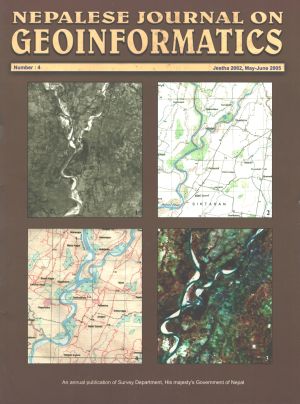Study of change in Urban Landuse
DOI:
https://doi.org/10.3126/njg.v4i1.51275Keywords:
Classification, Land use change, Urban Area prediction, Urban Land use, urban fringe growth, Urban planning, Satellite imagery assessment, Analysis technique assessmentAbstract
Land use and land cover change are the result of complex interaction between socio-economic factors and other driving forces. The driving forces in land use change include population growth, technological capacity, economical development, political structures, culture and the environment. Land use and land cover change modelling has becoming an extremely common tool to understand and explore land use change. This report primarily aims to predict the change in urban land use for future scenarios. Next, it evaluates satellite imageries along with analysis techniques for feasibility in urban change detection. A post classification comparison is done to find out the land use change in Kathmandu valley from 1988 to 2001. Based on the land use maps urban land use was found to change from 11% to 19% during the study period. Adeos AVNIR 1997 image and maximum likelihood classification was found to be the best among the tested. Urban prediction was established on a rule-based model along with weightage tables to fit the local conditions. The predictions were done on the vector data of 1992 and overlaid upon the classified urban of 1997 to determine the accuracy of predictions.




